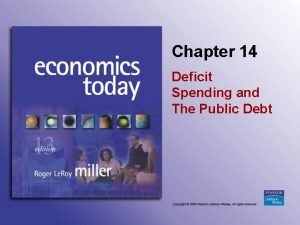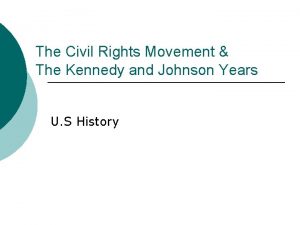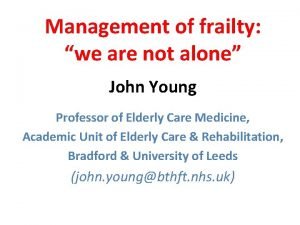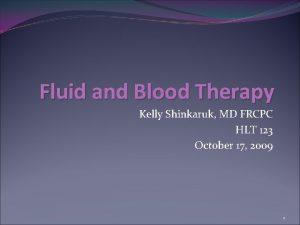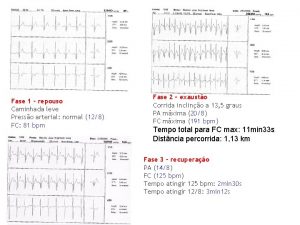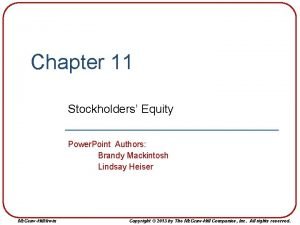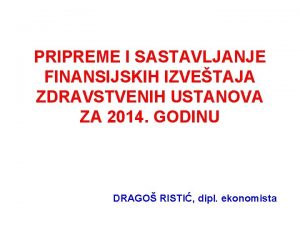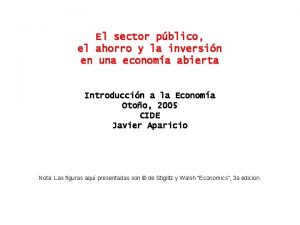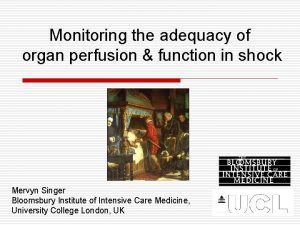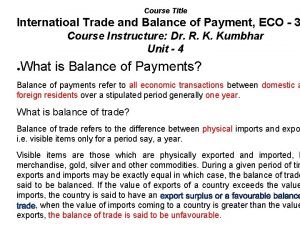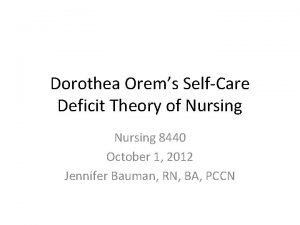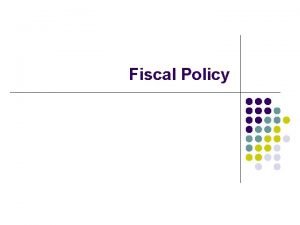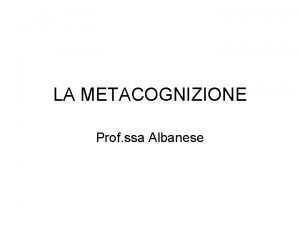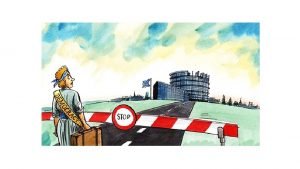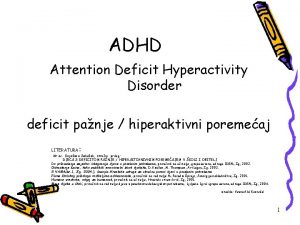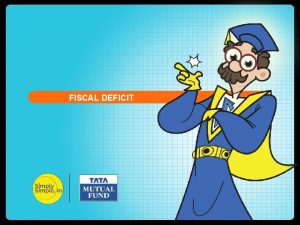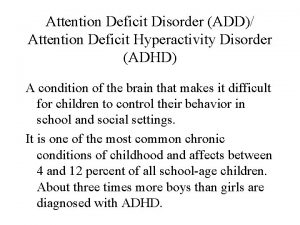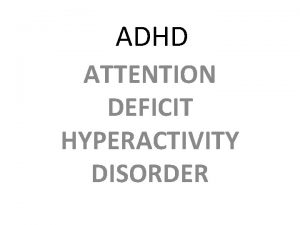Roosevelt started this type of spending deficit spending

























- Slides: 25

• Roosevelt started this type of spending – deficit spending • How many workers remained unemployed in 1935? • • 10 million How many justices was FDR hoping to pack the court with if the bill he sent to congress passed? – 6 • During FDR’s presidency, the goal of this was to provide security to the elderly and unemployed – Social security Who won the Election of 1928? – Herbert Hoover • This type of stock market convinced many people to invest in the 20 s. – Bull Market • • • Making an investor repay the loan at once if a stock price fell – Margin call October 29 1929 when the stock market sold 16 million shares and lost between 10 and 15 billion dollars in value is known as • Black Tuesday What was the nick name for FDR’s cabinet? – “The Brain Trust” • Name given to Roosevelt’s radio addresses – “fireside chats”

The Great Depression and The New Deal Chapters 18 and 19

Video Notes The Great Depression and the New Deal The Causes of the Great Depression • Herbert Hoover- inaugurated on March 4, 1929 – Optimism -drove stock prices to new highs • Bull market – many people invest in stocks – Bought stocks on margin, making only a small cash down payment –rest as a loan from a stockbroker

Notes • Margin call - investor must repay the loan at once if a stock price fell – sensitive to any fall in stock prices • In the late 1920 s many investors bid prices up without considering a company’s earnings and profits - speculation

Notes • The Great Crash – market was running out of new customers – professional investors sensed danger and began to sell off their holdings – The start- October 24 - Black Thursdaymarket plummeted – – Black Tuesday October 29 1929, 16 million shares of stock were sold - lost between $10 billion and $15 billion in value – VIDEO

Notes • Weakened banks in two ways – Loaned to stock speculators – had invested depositors’ money in the stock market • banks lost money on their investments, and speculators defaulted on their loans • Less credit available • Sends economy into a recession

Notes • Banks begin to fail • crisis of confidence in the banking system. – Depositors made runs on banks causing them to collapse- bank run – many withdraw their money at one time • 10 percent closed by 1932.

Notes • Other factors of the Great Depression – Overproduction – Buying on an installment plan – leads to debt- leads to fewer purchases • slowdown in retail sales effects the entire economy – Hawley-Smoot Tariff - average tariff rate to the highest level in American history – Federal Reserve - kept rates low

Notes • 1931 - Hoover increased funding for public works – Government financed building projects – However, Hoover refused massively increasing government spending – Instead, focused on expanding the money supply – believed that state and local governments should provide relief

Notes • By 1932 - Emergency Relief and Construction Act – $1. 5 billion for public works and $300 million in emergency loans to the states – first time in United States history, the federal government was supplying direct relief funds – Too late to reverse the collapse – Newly homeless people put up communities of shacks or Shanty towns that were eventually called Hoovervilles. • FDR is elected president

Notes The New Deal Video • By the day of Roosevelt’s inauguration, most of the nation’s banks were closed • One in four workers were unemployed • The first New Deal begins

Notes • Roosevelt and his advisers - called the “brain trust” – send bill after bill to Congress. – Between March 9 and June 16, 1933 • which came to be called the Hundred Days • Congress passed 15 major acts to resolve the economic crisis-First New Deal

Notes – Roosevelt declared a national bank holiday, temporarily closing all banks • Roosevelt began giving radio addresses known as “fireside chats” – Let the American people know directly what he was trying to accomplish – Ends the banking crisis

Notes • National Recovery Administration (NRA) – codes of fair competition – set prices – limited factories to two shifts – shortened workers’ hours, with the goal of creating additional jobs – established minimum wages – right to form unions – urged consumers to buy goods only from companies that displayed the Blue Eagle

• NRA problems Notes – Gains short-lived – Small companies complained - large corporations wrote the codes to favor themselves – employers disliked codes that gave workers the right to form unions and bargain collectively – paying high minimum wages forced them to charge higher prices – industrial production actually fell after the organization was established – Declared unconstitutional in 1935 • Constitution did not allow Congress to delegate its legislative powers to the executive branch

Notes • Relief Programs 1. Civilian Conservation Corps (CCC) • young men 18 to 25 years old • forestry service 2. Federal Emergency Relief Administration (FERA) • channeled money to state and local agencies 3. Public Works Administration (PWA) • awarded contracts to construction companies

Notes 4. Civil Works Administration (CWA) • hired workers directly • 300, 000 women • spent nearly $1 billion in just five months

Notes The Second New Deal – 1935 - economy had shown only a slight improvement after two years – 10 million workers remained unemployed – nation’s total income was about half of what it had been in 1929 – Roosevelt started deficit spending

Notes • FDR launched a series of programs known as the Second New Deal – Works Progress Administration (WPA) • largest public works program • spent $11 billion • highways, public buildings, parks, bridges, airports • VIDEO

Notes – National Labor Relations Act AKA “The Wagner Act” • guaranteed workers the right to organize unions and to bargain collectively • set up the National Labor Relations Board (NLRB) • binding arbitration -dissatisfied union members could take their complaints to a neutral party who would listen to both sides and decide on the issues • NLRB could investigate employers’ actions and secretly find out if workers wanted to unionize.

Notes – Social Security Act • goal –provide security for elderly and unemployed workers • viewed primarily as an insurance measure • collect -stopped working at age 65 • Unemployment insurance – supplied a temporary income to unemployed

Notes • An attempt to organize industrial workers – Committee for Industrial Organization (CIO) in 1935 • unions that included all workers, skilled and unskilled – Sit-Down Strikes • employees stopped work inside the factory and refused to leave-prevented replacement workers • United Auto Workers (UAW) – GM factory in Flint – strikers held factory for weeks – police launched a tear gas assault- wounded 13 strikers –they held – GM accepted UAW as its employees’ sole bargaining agent

Notes • Roosevelt worried about the court ruling on the NRA and the Agricultural Adjustment Act - both ruled as unconstitutional • furious that, “nine old men”, were blocking the wishes of a majority of the people – sent Congress a bill to increase the number of justices – possibly by as much as 6 – court-packing plan • proposed that if any justice had served for 10 years and did not retire within six months after reaching the age of 70, the president could appoint an additional justice to the Court

Notes – Roosevelt’s actions -forced Supreme Court to back down • Court upheld the constitutionality of the Wagner Act by a vote of 5 -4 • upheld the Social Security Act • Finally- conservative justice resigned, enabling Roosevelt to appoint a New Deal supporter to the Court • Hurt his reputation

Notes • The New Deal’s Legacy – limited success in ending the Depression – Unemployment remained high – economic recovery was not complete until after World War II – Business leaders, farmers, workers, homeowners, and others now looked to government to protect their interests – Established the broker state – new public attitude toward government- safety net for Americans- duty of the government
 Deficit spending exists when
Deficit spending exists when @soup_nn
@soup_nn Why did the struggle for equal rights intensify
Why did the struggle for equal rights intensify Frailty score
Frailty score Déficit de base
Déficit de base Fluid deficit calculation
Fluid deficit calculation Self care requisite
Self care requisite Déficit cronotrópico tabela
Déficit cronotrópico tabela Tea and toast syndrome
Tea and toast syndrome Retained earnings accumulated deficit
Retained earnings accumulated deficit Budžetski deficit
Budžetski deficit Metodo de deficit acumulado
Metodo de deficit acumulado Deficit and constant loss method
Deficit and constant loss method Pamela fishman gender theory
Pamela fishman gender theory Ahorro privado y publico
Ahorro privado y publico Koprostáza
Koprostáza Déficit énergétique relatif dans le sport
Déficit énergétique relatif dans le sport Hypernatremia 교정
Hypernatremia 교정 Base deficit
Base deficit Deficit in balance of payment
Deficit in balance of payment Dorothea orem background
Dorothea orem background Fiscal deficit meaning
Fiscal deficit meaning Deficit sacharázy
Deficit sacharázy Deficit sebaopatery
Deficit sebaopatery Per feuerstein i deficit cognitivi sono originati da una
Per feuerstein i deficit cognitivi sono originati da una Deficit de biotina
Deficit de biotina
